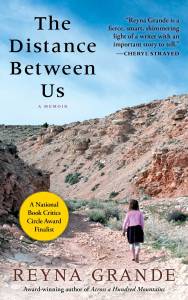Lesson of the Month
Do you want to make reading active, collaborative, and daring? Do you want to teach in a way that sets students on fire with excitement about literature and learning? Do you want to get out of the way as the teacher and help students connect directly with complex texts? Do you want to honor and amplify the voice of every single student? Do you want to create a space for students to interrogate, own, embrace, challenge, and play with literary language? Do you want every student to reach success?
We know the answer is “Yes!” And we hope you know that we’re here to help. Every few weeks, we’ll post a free lesson plan for you to try. Check out this lesson, which includes a rationale, the play-by-play, any handouts you’ll need, and assessment ideas.
Let us know how it all goes by commenting on this blog or tweeting us @FolgerED!
Pre-reading Reyna Grande’s The Distance Between Us: Tossing Words and Lines
WHAT
The Folger Method gets all students unlocking all kinds of texts, not just Shakespeare. Use the Folger essential strategy of tossing words and lines to help students discover the language of Reyna Grande’s memoir The Distance Between Us.
WHY
The Distance Between Us is full of juicy language, rich imagery, compelling storytelling, and big questions that matter in a big way. Starting with a single word is the least intimidating way to begin studying a work of literature. In this lesson, students enter a new text at the level of a word, and through familiar actions: throwing, catching, and shouting. And all this focus on the words, words, words gets students doing close reading on their feet!
In groups and as a class, students will speak and listen to powerful words—and later, lines—from Grande’s memoir and use this experience to make inferences about the mood, setting, conflict, and characters of the text. They’ll also get excited and motivated to keep studying The Distance Between Us, to move on to bigger challenges like grappling with whole speeches and chapters. Finally, this lesson sends the message that learning will be all about the sparks that fly when students, with all their unique experiences and perspectives, connect directly with vivid language.
HOW
BEFORE CLASS:
- In a coffee can or basket, create a collection of strips of paper or index cards, each with a single word or short phrase from The Distance Between Us. Read on for our pre-made, ready-to-cut strips of words and lines for tossing. We’ve made the handouts for you!
- Gather several beanbags (or foam balls, or socks tied in knots). Make sure you have 1 for each group.
IN CLASS:
ACTIVITY #1: TOSSING WORDS
This activity works best with groups of 6-8 students, so if you have a class of 6, you can do multiple rounds of this activity. If you have a class of 36, invite students to form 6 groups of 6.
- Students get into circles of 6-8. You visit each circle: each student pulls a slip out of the can and reads it quietly without sharing. You leave a beanbag with someone in each circle.
- Off they go: in each circle, the student with the beanbag pitches it, along with her word or line, to another student in the circle. (That’s right: you speak your word when you throw the beanbag.) She catches it, pitches it and her word to yet another student, and so on. Keep Grande’s language and the beanbags going for 6-7 minutes or so. Every student will have said her piece several times by the time you wrap up. You’ll have a whole room of students moving and sending Grande’s language to one another!
Note: Avoid correcting pronunciation and supplying the definition. Your job is to let students own the words and the process and to discover for themselves. At this stage, what matters most is not correctness but rather engagement and comfort with the language. If students are saying the words and enjoying their sounds, they’re on target! Students can determine and clarify important word meanings later. - Reconvene as a whole class. On the board, compile everyone’s words.
- Invite responses to the activity. Students should think-pair-share the following questions, one at a time.
- How did it feel to say the words out loud?
- If you’re unsure about your word, what do you think it might mean? What makes you say that?
- Based on all these words today, what kind of world do you think we’re about to enter? What makes you say that?
- What else can you infer about this text, based just on these words?
For the complete lesson plan with more activities and materials, click here!
For more classroom resources, visit folger.edu/teaching-modules

